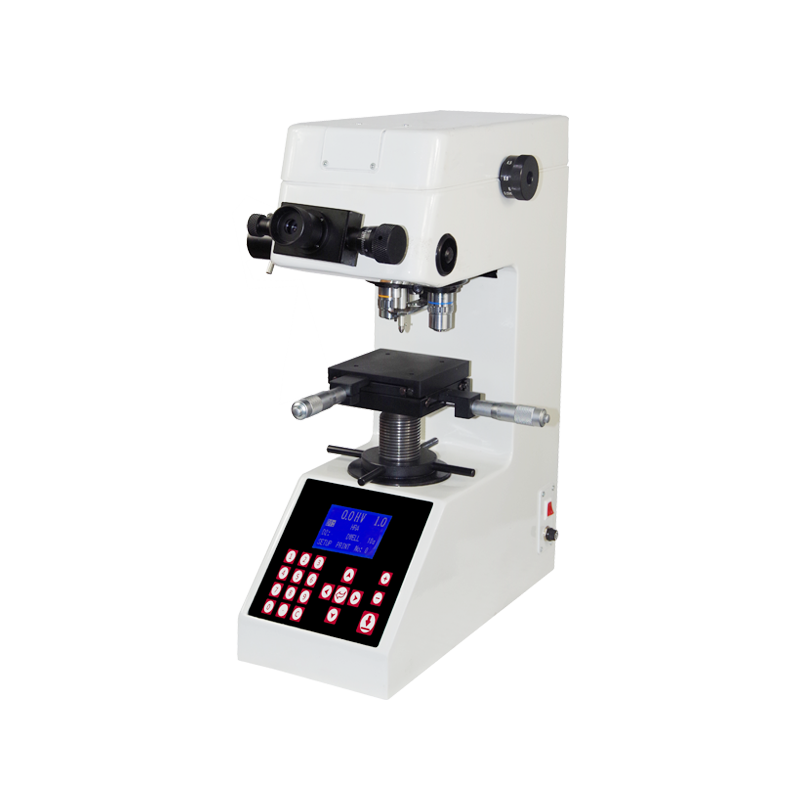Product
 Overview
Overview Graphic
Graphic Technical
Technical Configuration
Configuration Related
Related
Product
- Overview
- Graphic
- Technical
- Configuration
- Related
-
 Product Overview
Product OverviewMitech MHV-1 micro hardness tester, based on the principle that positive quadrangular pyramid diamond indenter presses the surface of the sample to produce indentation.By measuring the diagonal length of the indentation to achieve the measurement of the hardness of the material can be for small specimens, thin specimens, surface coating, heat treatment of the workpiece surface Vickers hardness test. With stable performance, strong structure, high reliability, simple operation, adopt high magnification optical measurement system, adjust the cold light source, photoelectric sensing technology and computer-aided means it has a powerful function. It is widely used in the fields of metal processing, electronics industry, mold parts, watch manufacturing, engineering quality inspection and so on. It is an ideal hardness tester for material research and testing.
 Function & application
Function & applicationMetal processing manufacturing quality control links
University education teaching demonstration experiment
Failure analysis test of metal material
Testing of material hardness of scientific research institutions
Quality inspection departments quality testing links
 Working Principle
Working PrincipleMicro-Vickers (or Knoop) hardness test principle is that put the provisions of the positive pyramid diamond indenter into the sample surface(with fixed experimental force) and maintain a certain length (holding), and then unloading. Finally, there is a positive quadrangular pyramid or kenup indentation with a square surface on the surface of the specimen. Then we can attain the area of indentation via measuring the length of the diagonal by a micrometer eyepiece. Then the corresponding Vickers (or Knoop) hardness values are obtained.
Usually Vickers hardness values can be converted according to the following formula
HV=constant×test force / indentation surface area≈0.1891 F/d2
Note:
HV, Vickers hardness symbols
F, test force
d, the arithmetic mean of of the two diagonal d1, d2
 Working Conditions
Working ConditionsOperation Temperature:18~28℃;
Relative Humidity:≤65%;
In an environment free from vibration,no corrosive medium.
Installed on a flat basis.
 Instrument Features
Instrument FeaturesWidely used in the fields of metal processing, electronics industry, mold parts, watch manufacturing, engineering quality inspection;
Innovative, rugged construction, high reliability, easy to operation, intuitive reading, high efficiency;
Adopt large-screen LCD liquid crystal display, easy to operate, visually display the test results;
Adopt high magnification optical sensing system and high precision photoelectric sensing technology, the test point positioning is accurate, the test result is more accurate;
Adopt diamond indenter, durable and accurate;
Adjustable cold light source measurement system that can control the light strength through the software;
Optional photographic device, can be achieved on the measured indentation and material microstructure to shoot for later analysis;
With GBT4340.1, GBT4340.2, ASTM_E92 and other relevant domestic and foreign standards.
 Operating Method and Attentions
Operating Method and Attentions Instrument Maintenance
Instrument MaintenanceRead the manual carefully before using the instrument. Learn the operation steps and attentions to avoid damage the instrument or personal safety accidents caused by improper operation;
The instrument should be carried at the bottom of the handling, to prohibit cross. Before loading, please unplug the power plug, fixed measuring lever and remove the weight and boom;
Carefully remove the shockproof tape for protecting the indenter when installed otherwise the accuracy of indenter positioning is not high;
The surface of the test piece should be smooth, no dirt, scale, pits and significant processing traces;
Machine add unloading test power, it is forbidden to turn the variable load the handwheel, such as rotating dislocation can lead to internal gear, chaos test force, and even cause damage to items within the machine;
Diamond indenter and indenter are the core of the instrument, the operation should be careful not to touch the pressure head
The indenter should be kept clean when used to ensure the accuracy of the test. If the indenter is stained with oil or dust and other stains, can be used cotton with absorbent (industrial) or ether in the top of the indenter carefully wipe clean
When not in use for a long time should cover dust cover, in order to prevent dust into the machine interior, hardness block, ball head after using coated with anti-rust oil, prevent rust;
After a long idle time, the electrical components should be preheated before testing
Conducted at least once a year instrument verification, to ensure the accuracy of the hardness tester
When replacing the fuse or removing the weight, turn off the power first;
Don’t disassemble the instrument without authorization, maintenance related matters please contact MITECH after-sale service department, 4000600280
-

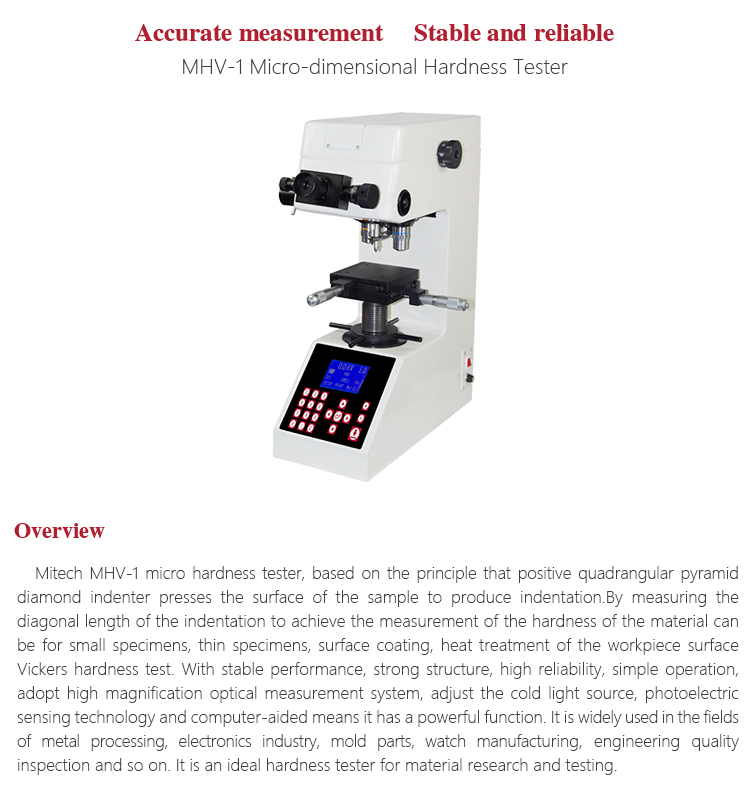
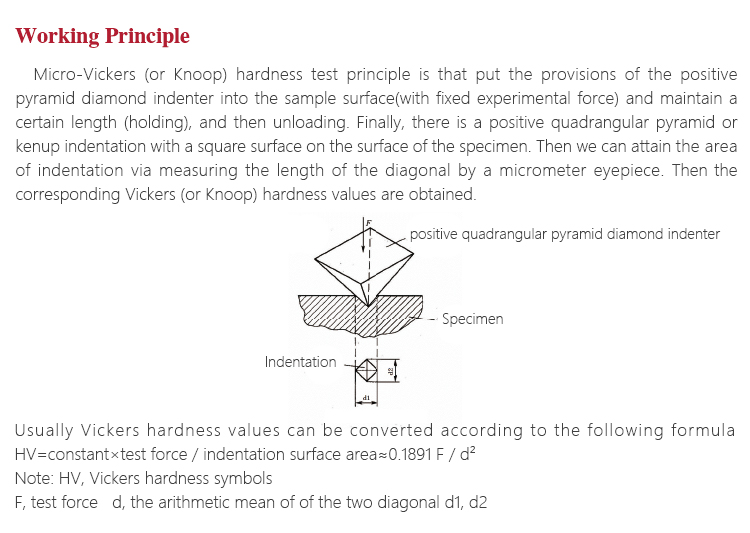
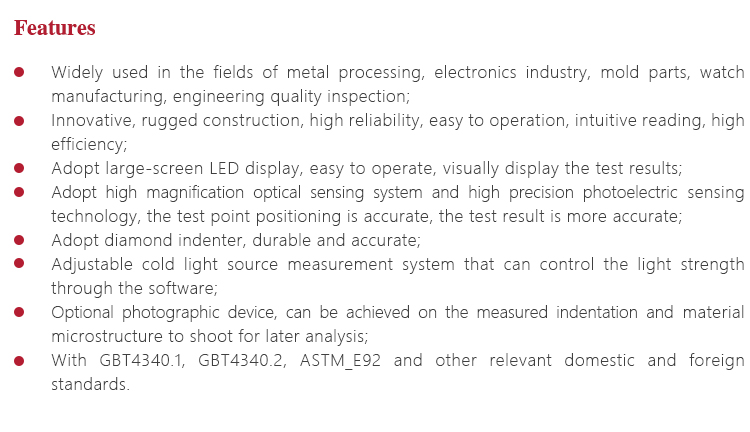
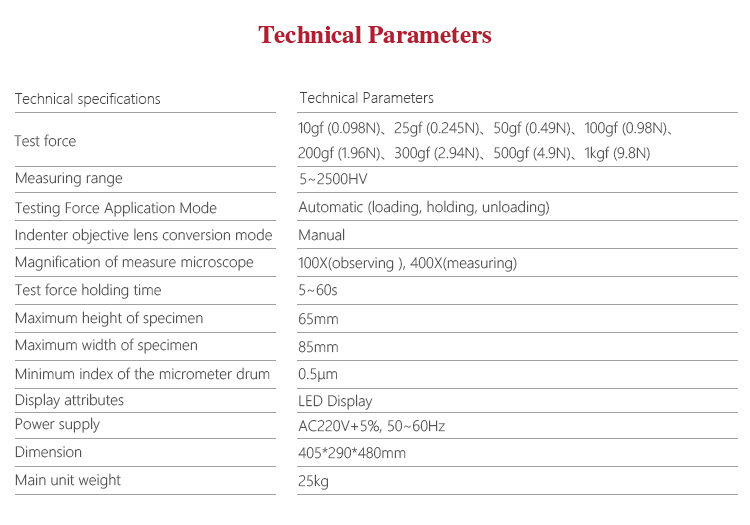
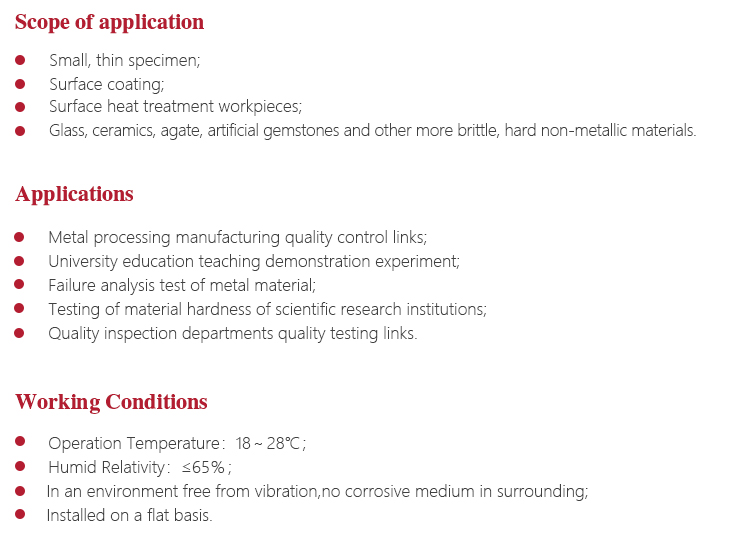

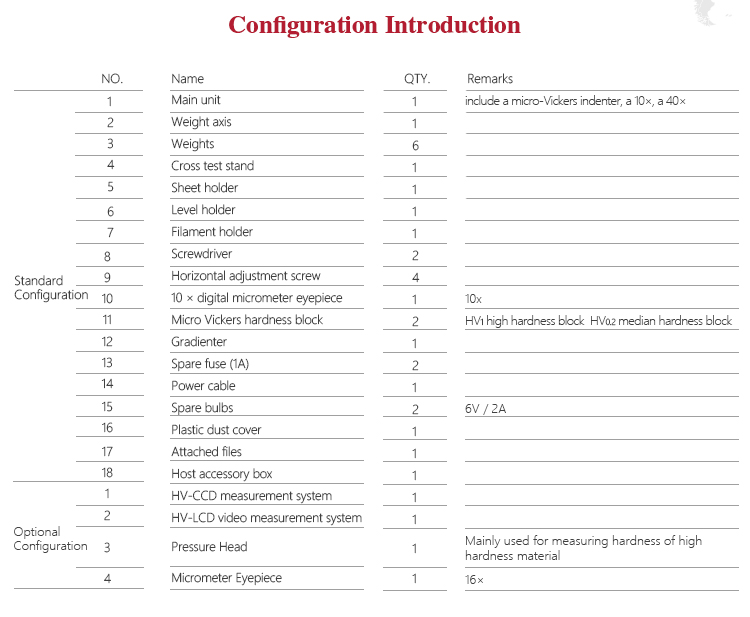
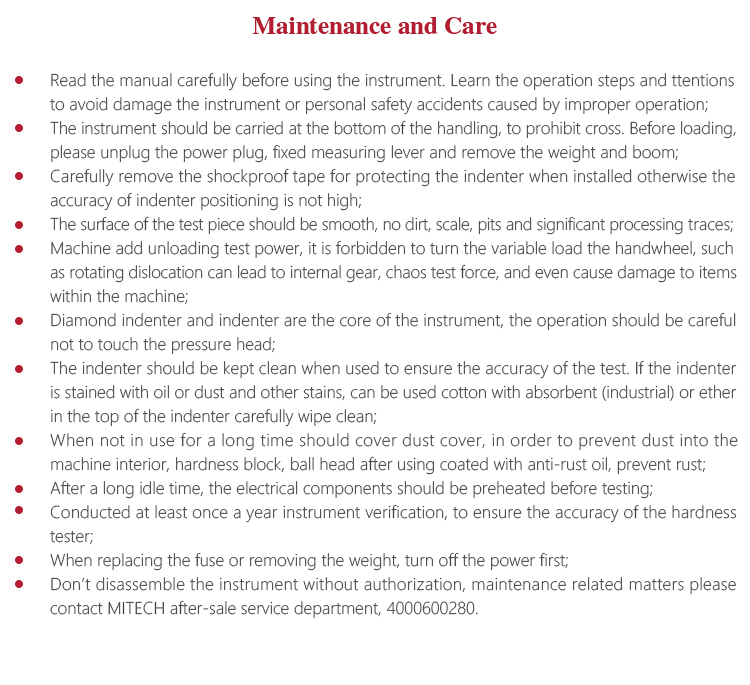
-
Test force 10gf (0.098N)、25gf (0.245N)、50gf (0.49N)、100gf (0.98N)、 200gf (1.96N)、300gf (2.94N)、500gf (4.9N)、1k Measuring range 5~2500HV Testing Force Application Mode Automatic (loading, holding, unloading) Indenter objective lens conversion mode Manual Magnification of measure microscope 100X(observing ), 400X(measuring) Test force holding time 5~60s Maximum height of specimen 65mm Maximum width of specimen 85mm Minimum index of the micrometer drum 0.5μm Display attributes LED Display Power supply AC220V+5%, 50~60Hz Dimension 405*290*480mm 405*290*480mm Main unit weight 25kg -
-





